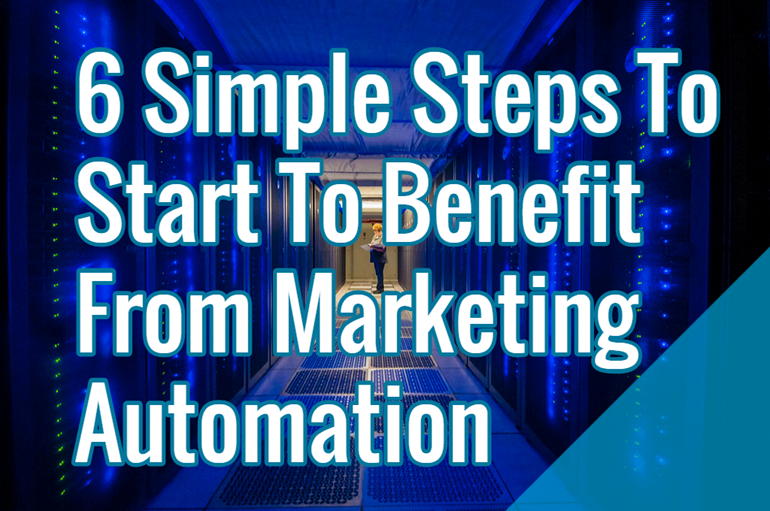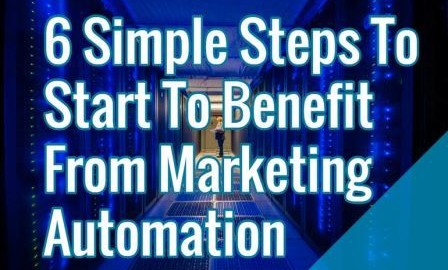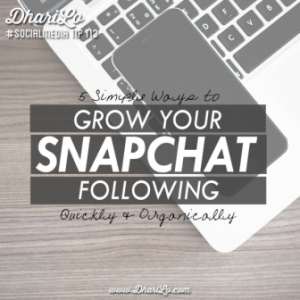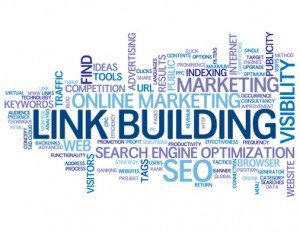
Marketing automation: sounds complicated, right? Nope. The definition is all in the name: automating your marketing strategies online.
Okay, so I might have lied. The definition of marketing automation is easy but the actual strategy to get your marketing automation campaign off the ground is more complicated – at first. Once you get to know the process, you realize it’s really just common sense marketing.
1. Get Traffic
In order for all your well-planned content, landing pages, CTAs etc. to work, you need enough eyeballs to make it worth the investment.
Aside from SEO and paid search methods, one way to get more visitors to your site is through unique content.
Are you thinking what I’m thinking right now? Blogging! With the right amount of keyword research, you can come up with relevant topics to pump out two or three blogs a week. That’s 144 blogs a year attracting people to your site!
(To learn how to get 200,000 more monthly visitors to your blog, read this)
2. Call To Action To The Next Step
Now that there are people visiting your site, you have to tell them what to do.
The best place to start is with those at the bottom of the funnel (aka BOFU). They’re in the decision making phase, ready to pull the trigger. Your job is to give them an easy target to aim for.
That’s where strategically placed CTA’s come in.
A CTA, or call-to-action, is typically a button that provides visitors with a suggested next step. Want to learn more about our product? Contact us! Wondering how much our services cost? Why don’t you click this convenient button and get a free quote.
Place CTA’s on appropriate pages. For example, don’t put a ‘get a quote’ CTA on a blog post. People reading your blog are more likely top of funnel (TOFU) leads.
Choose pages like your home page or product page for your BOFU CTAs to make it easy for leads to take that next step.
(These are the 7 characteristics of compelling Calls to Action)
3. Convincing Landing Page
Now, I may have gotten a little ahead of myself. CTAs are important, but before every great CTA must come a landing page. A place for your lead to land once they click your button.
On that landing page you need to convince the lead to fill out the form, complete the action suggested by the CTA, and become a real lead! Use images, bolding, colour, and bullet points to highlight convincing reasons to fill out the form.
Don’t distract them with elements like a navigation bar or links to outside pages. Save those distractions for your thank you pages – where your leads are sent after they convert on your landing page.
(Find out what are the Top 10 Features Of A Great Landing Page)
4. Tackling TOFU & Motivating MOFU Leads
Once you have your plan in place to catch your BOFU leads, it’s time to start thinking about your TOFU and MOFU (middle of the funnel) leads. To come full circle, one of the easiest ways to attract them is with valuable content. (Not sure? Here’s how to Know & Understand Professional Digital Marketing Jargon)
To target TOFU leads, put on your creative hat and start making easily digestible content in the form of infographics, tip sheets and eBooks. Create CTAs for these offers and use them in your blog posts. Use your social media prowess to promote your content offers and your blogs, too! You can also use social media to build up your reputation as an industry expert – post curated content that helps build trust with your TOFU targets.
Continue to build trust with your MOFU leads by creating more in-depth content. Put together case studies or industry specific eBooks to show them that you know your stuff and that your product works. Help nurture your MOFU leads down the funnel so you can capture them when they are ready to buy.
5. The Marketing Automation Part
Here comes the automation part. Once up and running it’s time to take some of the work load off of your employees and entrust it into the hands of technology.
When a new lead converts, instead of your sales team sending them an email set up a drip campaign using cleverly worded emails. Use the knowledge of your sales cycle to send emails at an appropriate rate reminding prospects about your brand and product.
But remember: don’t be too aggressive. Send a mix of soft conversions (blog posts, infographic) to build trust and hard conversions (get a quote, book a demo) to seal the deal. Use a consistent brand voice and personalization when necessary to help guide your prospects down the funnel.
(Get to know the 4 Ways to Save Time with Marketing Automation)
6. Tweak & Expand
Now that most of the set-up is out of the way, you’ve got to switch gears to maintain your strategy.
Use your marketing automation software to help you analyze data and report on what’s working and what’s not. Try A/B testing and fine-tune your ad copy and content on landing pages. Slowly build additional content and landing pages as required to keep your content fresh and bring in new eyeballs.
Hand-Picked Related Articles:
- The Inbound Marketing Funnel Reviewed From Top To Bottom
- 3 Psychological Tools To Use In Landing Page Design
- 4 Powerful Ways You Can Automate Your Marketing
* Lead image adapted from SandiaLabs
6 Simple Steps To Start To Benefit From Marketing Automation
The post 6 Simple Steps To Start To Benefit From Marketing Automation appeared first on Search Engine People Blog.
(76)
Report Post







